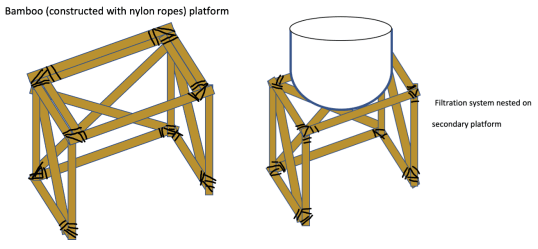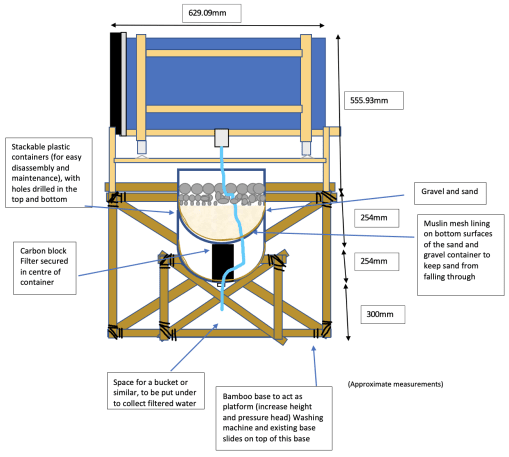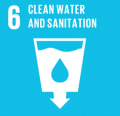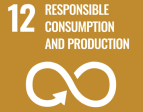Concept idea of a low-tech solution that filters out greywater and microplastics before water is drained out of the Divya washing machines
Follow articleHow do you feel about this article? Help us to provide better content for you.
Thank you! Your feedback has been received.
There was a problem submitting your feedback, please try again later.
What do you think of this article?
Introduction
For the People.Planet.Product student design challenge, an idea was developed for the “planet” challenge specifically. This challenge involved designing a low-tech solution that filters out greywater and microplastics before water is drained out of the Divya washing machines, enabling users to maximise water reuse/recapture (washing, cooking, cleaning, and agricultural farming).
Ease of Implementation
The concept uses gravity to move all the water through the whole filtration system, removing the need for mechanical advantage from components such as pumps. Therefore, keeping costs down, while also reducing the need for frequent maintenance and the knowledge and tools which would go with that. To ensure there is enough pressure head (height) for the water to travel through the whole filtration system via gravity, a base/platform is required to raise the height of the Divya washing machine’s drain. This base is also used to house the low-tech filtration system as well as some potential other items for storage.
For the filtration part of the concept, water leaves the Divya washing machine via its drain to a container filled with sand and gravel on top. This removes the larger impurities from the water, such as dirt, lint, nitrates and phosphates from the detergent and grease. Once the sand and gravel are filled with large impurities from multiple uses, they can be replaced if sand and gravel are present nearby, or they can be washed. Then the water seeps through the muslin/cotton mesh and into the container below through one of the many drilled holes at the base of the container. The muslin/cotton mesh prevents the sand and gravel from falling through the holes to the container below.
In the lower container, the water goes through the micropores of the carbon block filter, which filters most of the smaller impurities such as microplastics by trapping and absorbing these particles. However, water does take time to filter through this carbon block filter due to the size of these micropores. Then, the water travels out of the carbon block filter below into a space large enough for a bucket or similar to collect the filtered water.
At first, to filter greywater, foam filters such as Matala filters were considered due to their low weight; however, they were soon found to be too expensive. Therefore, sand and gravel were chosen due to their low cost, high availability, and a more natural way of filtering greywater. The sand and gravel would need to be washed or replaced from time to time to remove the accumulated particles from the filtration media.
Cost
The cost breakdown of the parts is shown in the Bill of Materials (BoM) table below. The majority of the costs of the materials were looked at using India as an example country to source the materials locally. For the sand, it is assumed that about half of the container will be filled with sand. For the gravel, 2-3 layers will be sufficient. As an alternative, materials such as sand and gravel can be collected locally and washed to reduce the overall cost. Most of the costs are estimates as they may be found at a lower price elsewhere, and the measurements are estimations such as with the nylon rope, where it is difficult to get an accurate number of the length required to construct the bamboo frames.
|
Low-tech Filtration System Prototype – Bill of Materials |
||
| Part | Quantity | Cost |
| Bamboo pole (24ft/7315mm long) | 1 |
$12.50 |
| Gravel (1kg) | 1 |
$2.83 |
| Sand (5kg) | 1 |
$1.52 |
| Carbon block filter | 1 |
$18.11 ($36.22 for a pack of 2) |
| Nylon rope ($10.86 per 10 metres) | 1 |
$4.34 (4 metres) |
| Muslin cloth ($11.84 per metre, 1600mm wide) | 1 |
$1.84 |
| Stackable Polypropylene plastic containers | 2 |
$9.70 ($4.85 each) |
| Total | 8 |
$50.84 |
Outsourcing plastic containers should be cheaper than manufacturing plastic containers via injection moulding as it eliminates the manufacturing costs and additional logistics. However, it does not allow the optimised shape of the containers for increased water flow rate.
Manufacture
The stackable containers can be outsourced from another manufacturer, such as the cuboid stackable polypropylene plastic containers; these were considered in the Bill of Materials. The plastic containers could alternatively be manufactured using injection moulding using HDPE sheets for a more optimised and accurate build (the optimised design is shown in the diagram above).
The rest would be manufactured/assembled by hand. This includes the bamboo frames, where they are constructed using nylon ropes. The bamboo pole will need to be cut into multiple smaller pieces, ensuring they are cut correctly and do not fray. Multiple holes of about 15mm in diameter will need to be drilled in the bases of the containers. One hole with a diameter slightly lower than the 63.5mm diameter of the carbon block filter will need to be drilled into the centre of each of the bases of the containers for the carbon block filter to slot into as a transition fit.
Materials
The Base would be made from bamboo due to its strength, being relatively cheap and its durability in wet conditions. Nylon rope will be used to construct the bamboo due to its durability, strength and does not require tools. The filtration system housing would be made from polypropylene plastic containers because of its durability and resistance to temperature change, grease, and water.
The carbon filter would preferably be a coconut carbon filter because it is a renewable source that does minimal harm to the environment throughout its lifecycle and is grown and therefore available throughout the year. Sand and gravel were chosen as they are relatively cheap, widely available, and natural to filter greywater. Muslin cloth was used to prevent sand from falling through the holes of the containers due to it having a very fine mesh, also preventing other large/medium impurities in the water. When worn out, the muslin cloth can be replaced by folded mosquito nets or old clothing.
Supply Chain
Environmental, social, and financial performance is vital for a sustainable supply chain. The majority of the materials can be locally sourced for the target market, reducing the environmental impact such as carbon emissions from less travel from the logistics. This includes the bamboo poles available across many parts of Asia while also growing in other parts of the globe, such as Africa. Communities can play a hand in the sustainable supply chain, where materials and parts can be sourced from them such as sand, gravel, bamboo. Alternative parts can also be sourced, such as old clothes or unneeded mosquito nets, which can be used instead of the muslin mesh.
The end-of-life of the system was considered in the brainstorming process. Materials and methods were kept as natural as possible with a low impact on the environment when sourcing and disposing of parts/materials. Sand and gravel can be washed or returned to where they were found or similar environments. The bamboo poles are durable and will last for many years, reducing the need for sourcing more material for the platforms.
Originality
There are many existing filtration systems/products, especially those for treating either greywater or microplastics specifically. Systems made for both greywater and microplastic filtration are usually industrial level water filtration systems. For the case of a low-tech greywater filtration solution, there are various DIY/simple solutions for greywater in the gardens of people’s homes, mainly for residential use. Many of these consist of a cheap plastic housing with plastic pipes, foam/lint, or similar filtration sheets. Some include pumps, while others rely on gravity for the greywater to move through the system. An example of a greywater filtration solution for residential use is those sold by the company Matala. DIY and low-tech sand and gravel filtration systems are rarer in developed countries; they are more common in many different variations in developing countries.
Solutions for microplastic removal from water exist in many forms, especially for residential use. Few microplastic filters for washing machines are in the market and are expensive. Solutions for microplastics are more prevalent in tap water filtration, such as reverse osmosis filters, which are very expensive and complicated. A simpler and cheaper existing product is an activated carbon block filter which is also used in tap water filtration.
Therefore, this filtration solution for the Divya washing machine is original in the sense that a low-tech system for filtering both greywater and microplastics is not currently on the market. It is an adaptation of existing ideas to solve a new issue.
Adoption
The communities that this concept is targeted for are low-income communities and/or those who lack access to clean water. This was highly considered during the design and brainstorming process of this low-tech filtration concept. Many factors were considered to make it easier to adopt for these communities, such as ensuring to keep the system as simple as possible and avoiding including any complicated mechanisms where maintenance and repair would be a struggle if there were a lack of specific equipment and knowledge. The system's height was strongly looked at during the design process, minimising the height as much as possible while keeping the functionality. The platform's top reaches about waist height; this will minimise struggle and strain when lifting the Divya washing machine.
The system will be shown to local communities in person as a show and tell to demonstrate the use of the product. Demonstrations could also be performed for the assembly of the product to show how to construct, repair and replace certain parts if needed while also letting people try it out. When this is not possible, an information and brief instruction sheet can be given out along with the product. This will be kept as simple as possible, with plenty of pictures for those that cannot read.
Sustainability
SDG 2 – Zero Hunger: The concept enables the ability to reuse water for agriculture and cooking, helping avoid problems such as having a lack of clean water to water plants.
SDG 6 – Clean Water and Sanitation: Greywater promotes the growth of harmful bacteria. The filtration system will enable the water from the Divya washing machines to be reused safely, reducing clean water usage as this filtered water can be used for purposes such as agriculture and cleaning.
SDG 12 – Ensure Sustainable Consumption and Production Patterns: Materials used in the concept, such as the bamboo poles and the coconut carbon block filter, will be predominantly made from renewable sources that are grown all year round
SDG 14 – Life Below Water: Without this filtration system, greywater and microplastics would be poured back into rivers and other water sources. This could cause harm to marine life from pollutants entering their habitats and microplastics entering their digestive systems and bloodstreams.
Cultural Relevance
The design put displaced and low-income communities at its forefront by making the design as accessible as possible for all, ensuring everyone has the opportunity to gain access to clean water. The majority of the materials used are locally sourced for most of the target market to ensure people will be used to the materials and know how they work.
Developed countries have complicated and expensive mechanisms to filter their water, where a skilled technician is required for maintenance, repair, and construction. However, for the target market for the Divya washing machine and therefore the filtration system idea, it focuses on developing countries where this is harder to come across and harder to achieve. Therefore, gravity was chosen to drive the water flow instead of a more complicated mechanism.
Conclusion
In summary, this design concept for a low-tech filtration system to remove greywater and microplastics from the water drained from the Divya washing machine has a significant focus on accessibility, sustainability, and durability. They are allowing low-income and displaced communities the opportunity to reuse their water in a simple yet effective way safely.






Comments